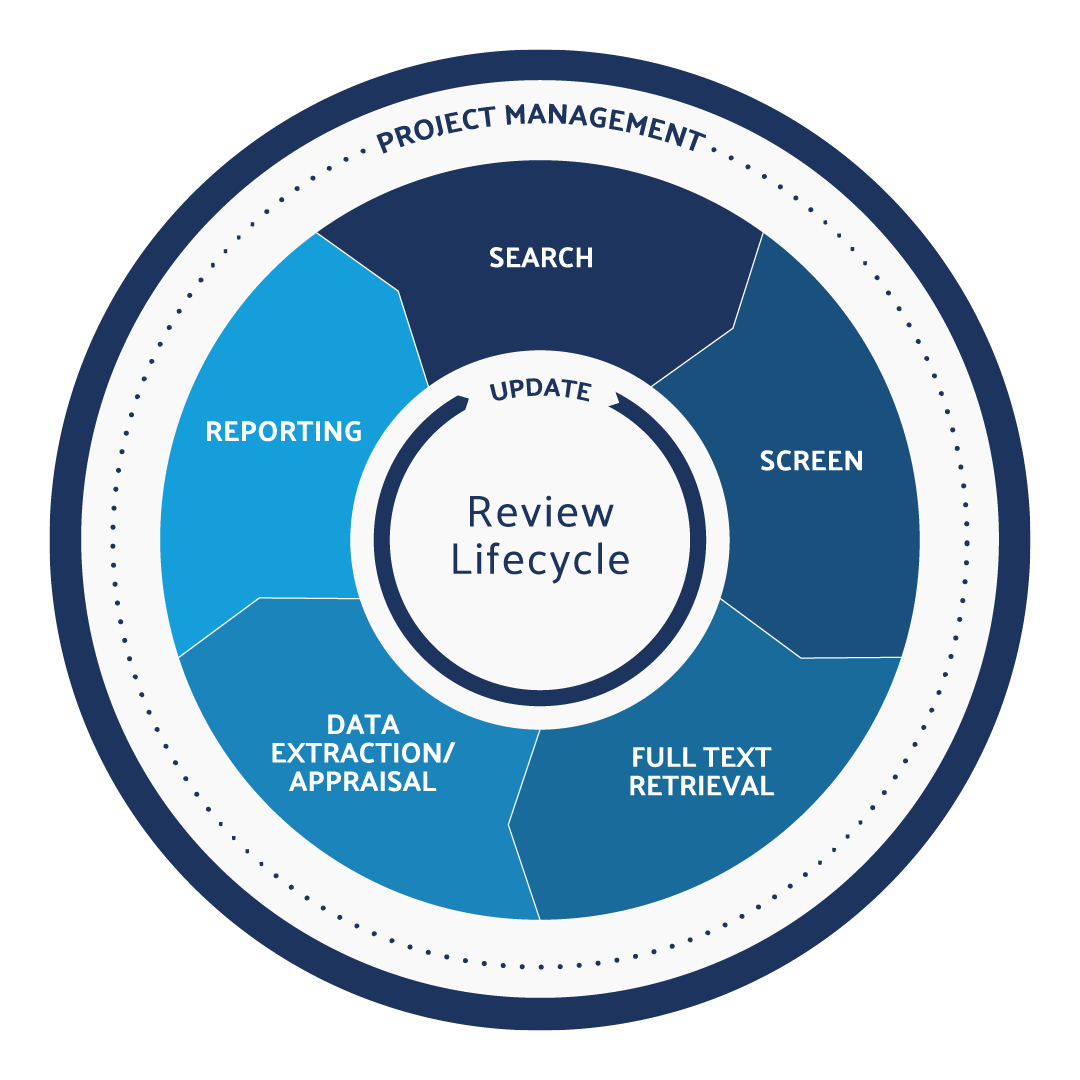Buyer’s Guide To Literature Review Software
About This Guide
Our team has been developing literature review software for the world’s leading research organizations for over 15 years. Though the software has evolved dramatically over that period, the questions we are asked about the features and benefits of review software haven’t changed much.
In this guide, we present a comprehensive list of things to consider when evaluating a literature review software solution.
This guide will:
- Explain what literature review software does and how it is used
- Discuss where literature review software fits within the overall review process
- Provide a checklist of features to help you with the evaluation process
Who should read this guide?
If you are doing literature reviews today, you already know that they are increasingly required for regulatory compliance and safety monitoring. You also probably know that, while reviews sound simple on the surface, they are big projects that can consume significant amounts of time and resources. Doing reviews well can be a challenge.
This guide can benefit you if:

You are struggling with the amount of time it takes to conduct a review
If you are involved in the preparation of literature reviews for Clinical Evaluation Reports (CERs), Performance Evaluation Reports (PER), or if you track literature for safety monitoring, you need to be able to enforce standardized review processes and methods across your organization. Since your work could be subject to an audit, you need to be prepared.

You need to reduce the time it takes to conduct a review

You’re concerned about manual errors compromising the quality of your review
Did I make a transcription error? Did we forget to review that paper by Nosyk? Has any of my data changed? Worries like these can keep a researcher up at night and can seriously impact the quality and integrity of your review.

You’re not sure which literature review software is the best fit for you
What does literature review software do?
Today’s literature review software automates the many manual tasks involved in conducting a review. Literature reviews are process intensive and data heavy, and not so long ago they typically involved circulating paper copies of articles and screening forms to the review team who captured their work on spreadsheets.
Most reviewers currently use some form of technology to help manage the information and data in their review projects. In fact, a recent survey showed that the vast majority of reviewers still use spreadsheets at some stage of their review process.
Of course, it is possible to produce results using spreadsheets, or even paper forms. That said, each of these methods has a number of drawbacks that can have significant impact on both the quality and the volume of research produced.
Just Say No To Spreadsheets
When using spreadsheets for review tasks such as screening, data extraction, or storing references, you may find yourself dealing with some or all of the following:
- A reviewing “bottleneck” because each stage of the review must be completed before the next one is started
- Manual data entry errors that can be difficult or even impossible to catch
- Excessive manual work in checking for disagreements and creating reports
- Questions about the validity of your results due to lost files or undocumented processes
Where does literature review
software fit in the process?
Literature review software is designed to reduce the manual work involved in conducting reviews and maintain a complete record of the work that’s been done on your review projects.
But how does it do this?
Once you’ve defined your research question and completed your search of relevant databases, you can typically import your search results into your literature review software and start your screening and data extraction processes.
Similar to the paper forms used in the past, literature review software uses electronic forms to record the answers to inclusion/exclusion questions. Some forms can be configured for data extraction. One of the main advantages that electronic forms provide is that they collect all your review data in one place, eliminating the need to manually cut and paste collate individual responses for processing and analysis.

“Why input data twice when it only needs to be done once?”
Digital forms can be reused an unlimited number of times. Depending on the form and the reviewer, they can usually be completed faster than writing or typing since they can incorporate easy-to-use answer formats like checkboxes or radio buttons. They can also validate your data and even perform calculations before you submit it, giving you cleaner results and fewer errors.
Screening and data extraction are the most common review tasks facilitated by literature review software, but there are often other valuable features such as direct connection to popular databases such as PubMed, automated report generation, and reviewer roles and permissions management.
With regulatory bodies calling for continuous monitoring and assessment of safety data, having your entire review project and all its references, full text articles and audit trail stored within your literature review software can be a huge time saver when it comes time for updates.
As literature reviews have become a fundamental component of the risk management system for many organizations, they are increasingly scrutinized for thoroughness, standardized processes, and data integrity. By maintaining complete, accurate records of every reviewer action and decision, and allowing you to establish and enforce repeatable processes, literature review software makes it easier to deliver regulatory compliant, audit-ready literature reviews on time and on budget.
Top 5 Ways Systematic Review Software Can Help You
#1 Compliance
#2 Speed
If there’s one thing that almost every reviewer wishes for, it’s more time. In our Survey of Literature Reviews, approximately one quarter of the respondents mentioned their greatest review challenge is the time involved in completing a review – to conduct searches, remove duplicates and irrelevant articles, complete screening, extract data, and prepare reports. In a recent survey of our user community, reviewers reported that literature review software reduced the time required to produce reviews by 40%-60%.
#3 Automation
No one wants to discover a mistake in their review right before – or worse, during – an audit.
Duplicate references, transcription errors, and data entry errors can skew, or even invalidate, your results. Literature review software can provide built-in automation and validation tools that dramatically
reduce the potential for errors in your reviews.
#4 Compatibility
Although literature review software can help with many tasks throughout the review lifecycle, your process likely includes other tools for searching and storing references and data. You also likely need to use the information from your completed review in reports and submissions. Your literature review software should allow you to import and export your data in all the most common file formats, such as CSV, Excel, Word, PDF, RIS, and ENLX.
#5 Collaboration
Literature review software packages today are typically cloud-based and can be used from any browser on any device. With a centralized, shared data set, your team can collaborate in real time, regardless of location.
Your Literature Review Software Checklist
Deciding to adopt literature review software is more than just a monetary investment – it’s a commitment to a new way of doing things. And just like any significant purchase, it’s always a good idea to do your research first.
Make sure you conduct a thorough assessment of each of the available options to choose the software that is the best fit for your needs. Below is a list of features that may be offered by systematic review software packages.
This requirement applies to my assessement
Search
Automatic reference updates to prevent the review from becoming out-of-date
Compatible with standard reference file types (RIS, CSV, and ENLX)
Direct integration with reference databases
Screening
Keyword highlighting for faster screening
Full-Text Retrieval
Data Extraction
Reporting
Project Management
Real-time updates on project progress to inform stakeholders and facilitate planning
Live customer support, professional services offerings and training
Enterprise-Grade Software
(High availability and redundancy, scalable to handle hundreds of thousands of references per project, secure and regulatory compliant)


